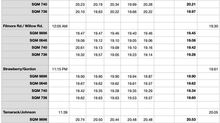Solar Eclipse Activities At ScienceAlive
- Chuck Bueter
- Jan 12, 2017
- 2 min read
Prepare for the exciting 2017 total solar eclipse at ScienceAlive! on Saturday, February 4, 2017. If you can't join us in person at St. Joseph County Public Library (SJCPL) in South Bend, IN, do these haptic activities with your kids at home or in school. Here's what we're planning to explore with all ages at ScienceAlive.
-Block out a light with a lollipop as if it were the moon eclipsing the sun.
-Customize and keep a free pair of eclipse glasses for your family while supplies last.
-Project dozens of crescent suns simultaneously with a collander, just as you safely can project them during the solar eclipse. You have to try this on August 21!

-Align three stuffed juggle balls to depict the syzygy of sun-moon-earth. (Depict what?!)
-Make a wingspan, and in your hands grasp objects to the scale of earth and of the moon at that distance. For example, at home connect a tennis ball to a dime with a piece of string. How long a string? For a clue, going to the moon is about ten trips around the earth.
-Hand-crank a K'NEX orrery to make a moon whirl around a planet. Bring in a light to cast eclipse shadows.

--Read eclipse cartoons by astronomy artist Jay Ryan.
-Find eclipse circumstances for your hometown on a poster of the eclipse path across United States.
-Explore a 10-foot map showing the swath of totality across the US.
-With your head being earth, witness moon phases emerging on a foam ball held at arm's length, and simulate eclipses by aligning your head and the ball with a bright light.
-Capture light energy with solar panels and maneuver solar-powered devices.
-Whet your appetite by perusing--and then buy online--the books Sun Moon Earth by Tyler Nordgren and Eclipse Bulletin:Total Solar Eclipse of 2017 August 21 by Fred Espenak and Jay Anderson.
-Model the earth and moon to scale--both in distance and in size--on a yardstick.

-Make a model with a hula hoop to simulate why eclipses don't happen every month.
-Arrange cards from the NASA Night Sky Network to show an energy web, like sun-plants-animal-people.
-Get a feel for eclipses with a NASA tactile book for both sighted and visually impaired persons, courtesy of Ken Quinn and David Hurd.
-Try more eclipse activities at home or in school, including solid lessons from the Astronomical Society of the Pacific.
-View posters showing eclipse phases and eye safety techniques in anticipation of August 21.
-Get excited about the solar eclipse with Michiana astronomy enthusiasts at ScienceAlive, who in the past have included (but are not all available in February 2017) Pat Chrenka, Ruth Nieboer, Bill Waskom, Dacota Schrader, William Amos, Ruth Craft, Linda Marks, Steve Accuosti, Eric Sorensen, Bruce Miller, and more.










































